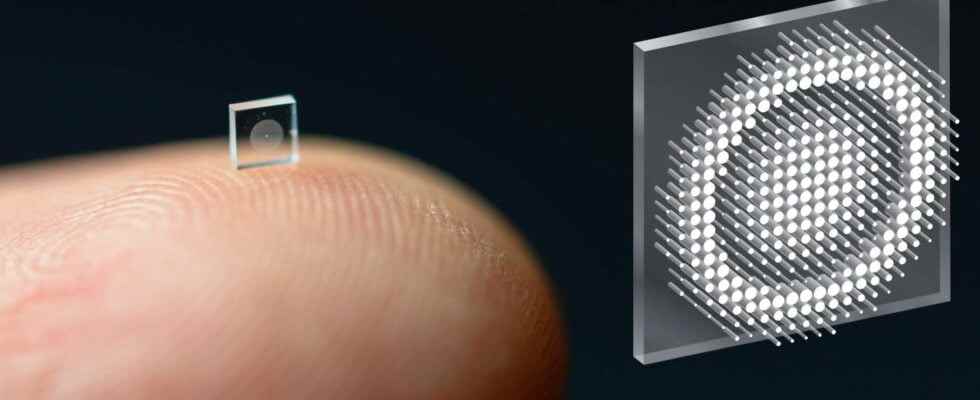Researchers have succeeded in creating a miniaturized, ultra-compact camera capable of taking high-definition, color shots. By using a metasurface rather than conventional optics, they succeeded in reducing the camera to the size of a large grain of salt.
You will also be interested
[EN VIDÉO] Interview 4/5: what perspectives for nanomedicine? Nanomedicine is the application of nanotechnologies to the medical world. It includes areas such as the administration of drugs in the form of nanoparticles as well as the use of nanobots. Dominique Vinck, sociologist of science and innovation, talks to us about the future of nanomedicine.
Miniaturized cameras could revolutionize medicine by making it much easier for doctors to see inside the human body. To this end, researchers from Princeton universities and Washington managed to create a camera the size of a grain of rice. Published in the journal Nature Communications, their article details their invention based on metamaterials.
The researchers created a metasurface which captures the light thanks to 1.6 million optical nano-antennas. Each must have its own unique geometry to properly form the optical wavefront. The design of the metasurface required complex simulations, using “ massive amounts of memory and time », To test many different configurations of nano-antennas.
A camera 550,000 times smaller than a conventional device
In addition to the simulations, the researchers created their own deconvolution algorithm in order to correctly reconstruct the resulting image. The result is a camera that is only 0.5mm thick and capable of taking photos of a quality similar to a conventional camera while being 550,000 times smaller in size. volume. This is not the first camera designed around a metasurface, but the previous results were of much lower quality.
In addition to reducing the size of the tools forendoscopy, the researchers imagine using the same technique to transform surfaces into sensors. This would, for example, convert the back cover of a smartphone into camera giant and thus eliminate the traditional photo module.
Interested in what you just read?
.
fs1
